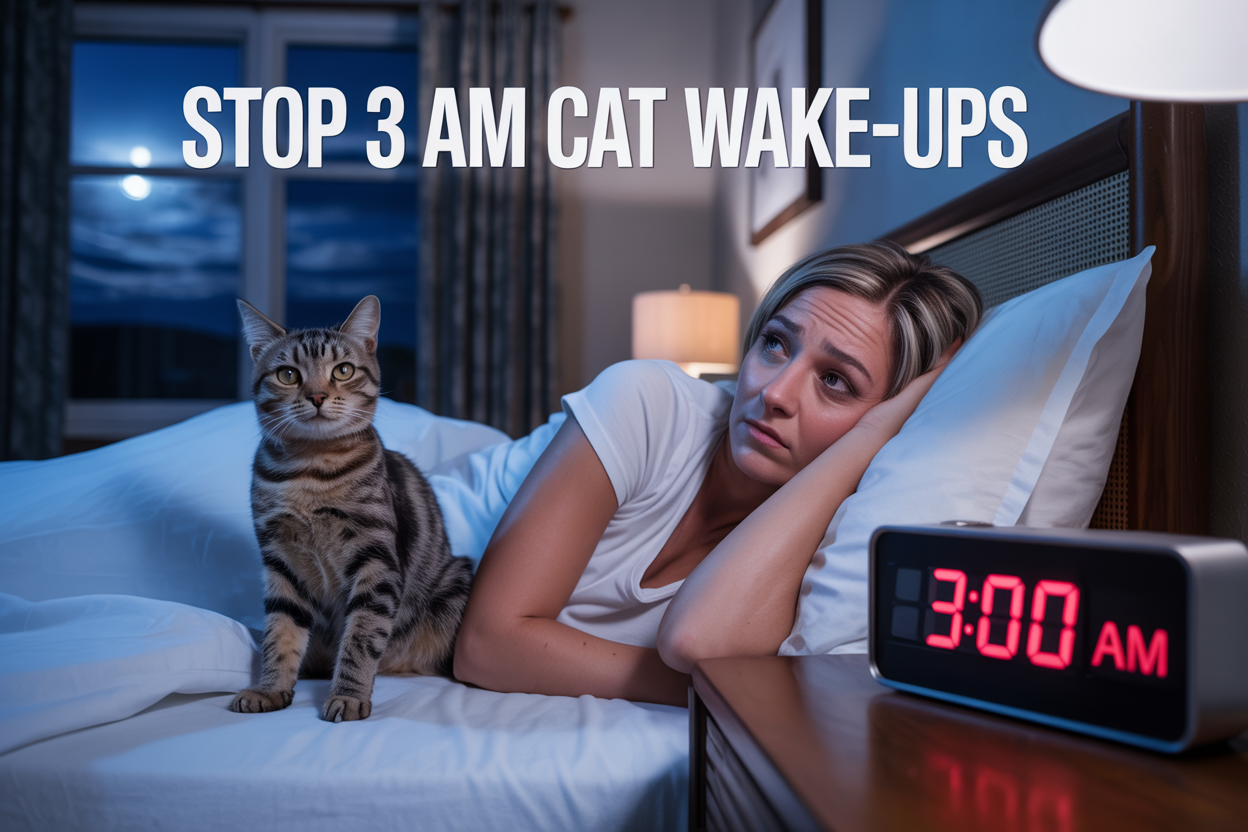Does your cat think 3 AM is the perfect time for a midnight concert or zooming session around your bedroom? You’re not alone. Many cat owners struggle with being jolted awake by meowing, scratching, or playful pouncing in the early morning hours. This guide is for exhausted cat parents who want to reclaim their sleep without sacrificing their bond with their feline friend. Whether you’re dealing with a young cat full of energy or a senior kitty whose sleep schedule has gone haywire, these proven strategies will help you both get better rest.
We’ll cover your cat’s natural sleep patterns and why they’re wired to be active when you want to sleep. You’ll learn pre-bedtime strategies to tire your cat out, plus how to break attention-seeking behaviors that turn your bedroom into a playground. We’ll also explore physical solutions like automatic feeders and room management, along with what to do when standard methods don’t work. Finally, we’ll set realistic expectations if you’re dealing with a kitten who might just need time to mature.
By the end, you’ll have a toolkit of practical solutions to stop your cat from waking you up at night and help both of you sleep peacefully through until morning.
Understanding Your Cat’s Natural Sleep Patterns
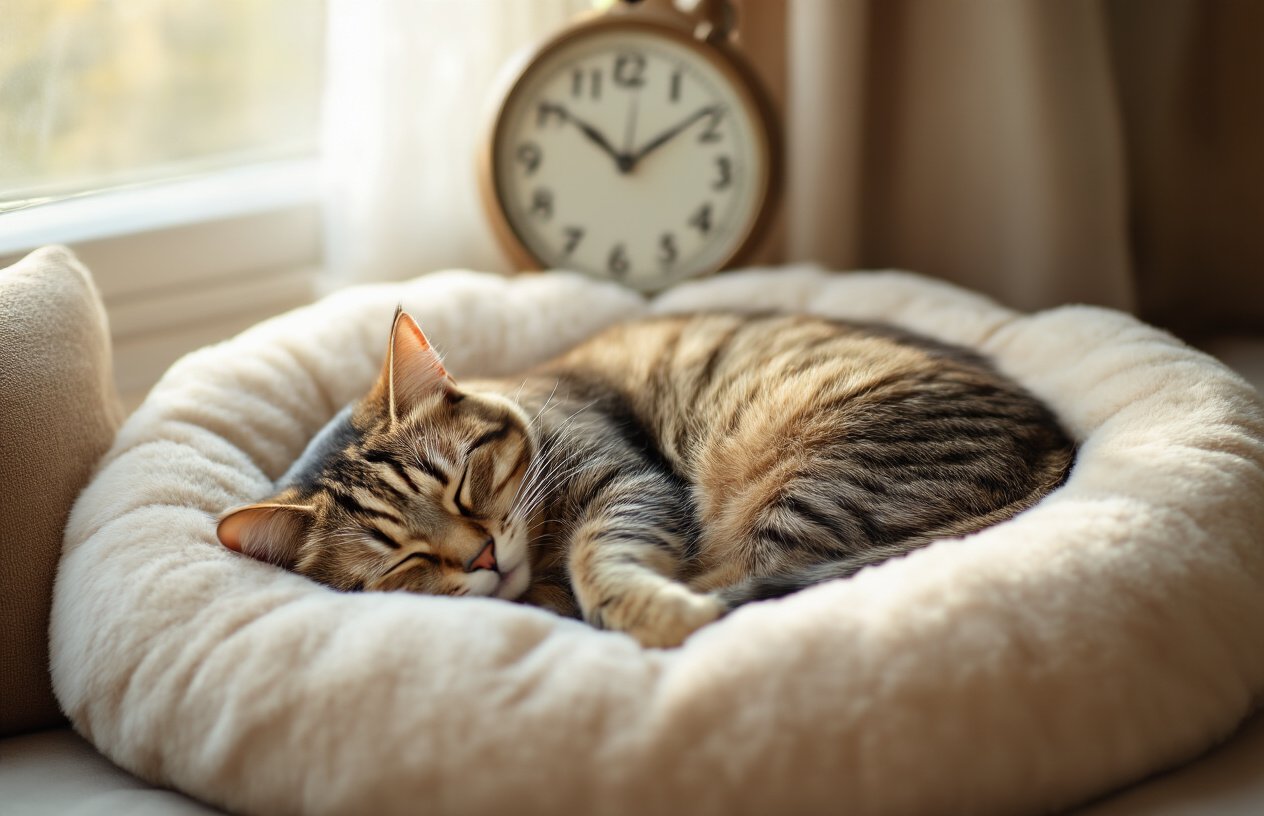
Why Cats Are Crepuscular, Not Nocturnal
Contrary to popular belief, your cat isn’t actually nocturnal. Cats are crepuscular, meaning they experience two natural peaks of activity – one in the early morning before sunrise and another in the evening around sunset. This behavior stems from their predatory nature, as their natural prey animals have different sleep cycles. Your cat’s crepuscular schedule allows them to hunt diurnal birds at daybreak and nocturnal rodents at twilight.
How Cat Sleep Cycles Differ from Human Sleep
Your cat follows a polyphasic sleep pattern, taking multiple naps throughout the day rather than one long sleep period like humans. These cat naps average 78 minutes but can range from 50 to 113 minutes. More than half of cats sleep between 12 and 18 hours daily, with nearly 40% sleeping over 18 hours. Like you, cats have circadian rhythms, but their internal clock operates differently – while humans are naturally diurnal, your cat’s system is designed for those dawn and dusk activity periods.
Pre-Bedtime Strategies to Tire Your Cat
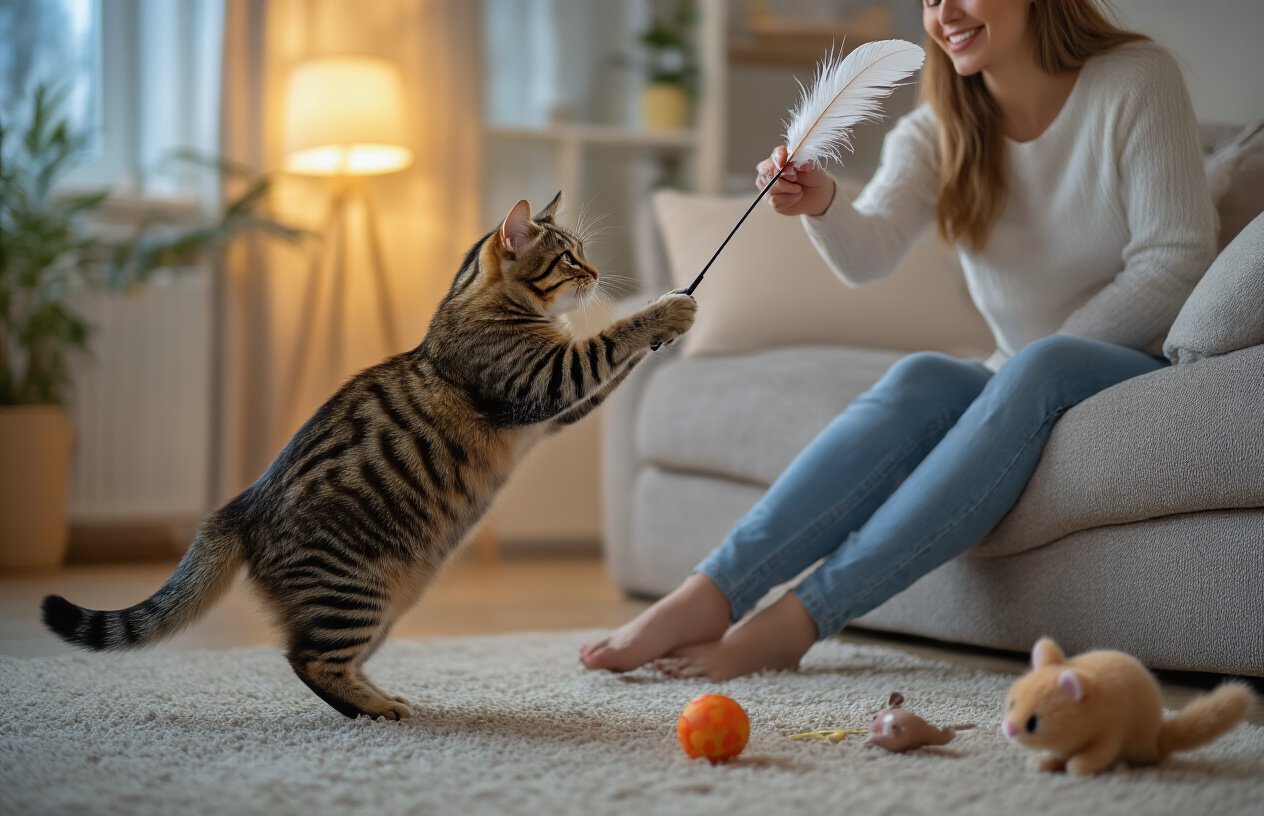
Drain Energy Through Interactive Play Sessions
You need to incorporate a robust interactive play session right before your cat’s last meal of the night to get them to the perfect point of exhaustion. This playtime should mimic the “Hunt, Catch, Kill” cycle that reflects your cat’s natural behaviors and signals that the day’s activities are winding down.
Feed Your Cat After Playtime to Complete the Hunt Cycle
After your interactive play session, feed your cat their final meal around 9:30 PM if your bedtime is 11 PM. This “Hunt, Catch, Kill, Eat, Groom, Sleep” cycle mimics your cat’s natural behaviors and helps regulate their energy levels to better align with your sleep schedule.
Set Up Overnight Foraging Activities with Puzzle Feeders
Now that you’ve established scheduled meal times instead of free-feeding, you can better control your cat’s energy peaks. By switching from allowing your cat to graze all day long to timed meals, you prevent their body from being in a constant state of digestion, making their energy levels more predictable and less likely to disturb your nighttime rest.
Top 15 Best Cat Toys of 2025 That Will Make Your Feline Purr with Joy!
Breaking the Attention-Seeking Behavior Cycle
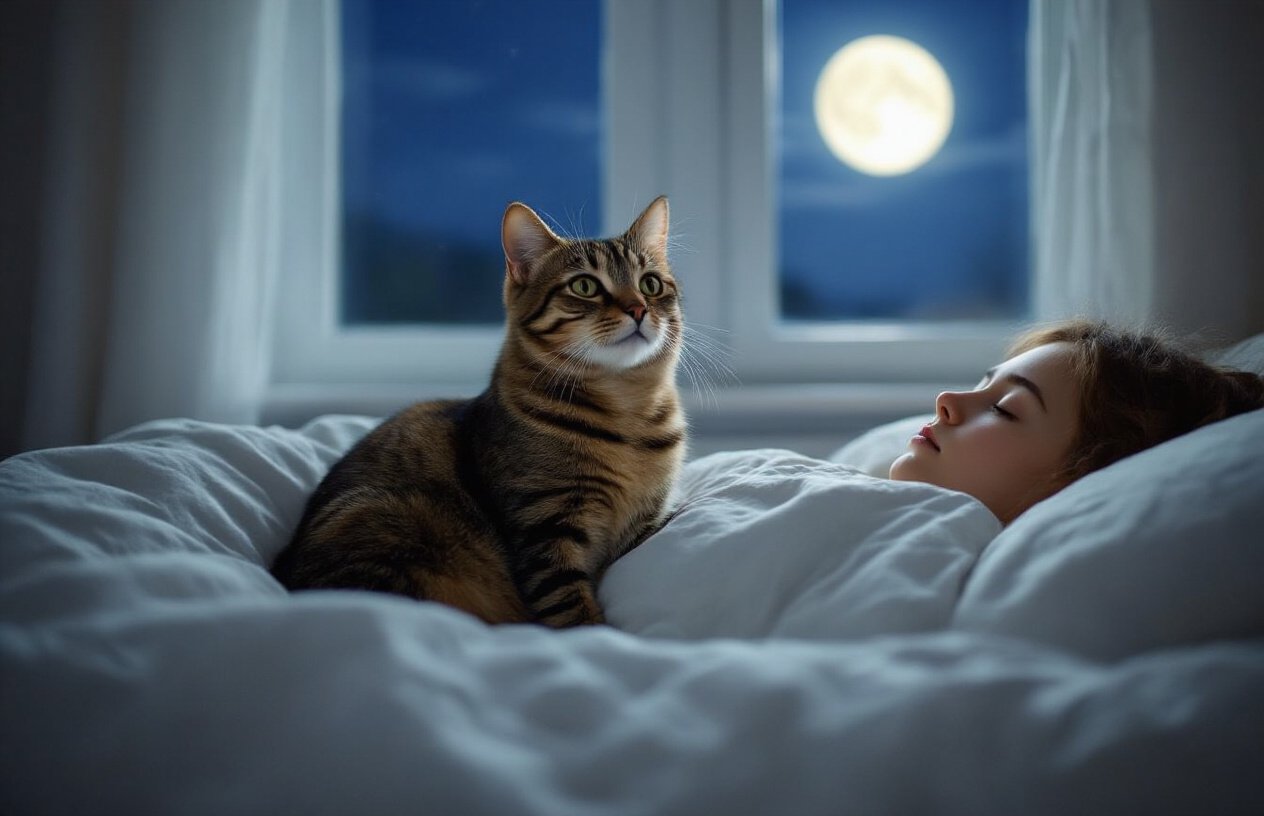
Never Reward Nighttime Meowing by Getting Up
When your cat seeks your attention at night through meowing or other disruptive behaviors, the most critical rule is to never give them what they want. Getting up to feed, pet, or play with your cat when they wake you up will only reinforce this unwanted behavior and make them try even harder next time.
Understand the Extinction Burst Phase
Before your cat’s attention-seeking behavior improves, you’ll likely experience what’s called an extinction burst – a temporary increase in the unwanted behavior as your cat becomes more desperate for your response. During this phase, your cat may meow louder, scratch at doors more persistently, or try new tactics to get your attention.
Stay Consistent Despite Initial Increased Disruption
It may take weeks for your cat to stop their nighttime attention-seeking behaviors, but consistency is key. If you ever give in and respond to their demands – even once – you’ll reset their expectations and they’ll try even harder the next time. Consider using earplugs, white noise, or sleeping in a separate room to help you maintain your resolve during this challenging period.
Physical Management Solutions
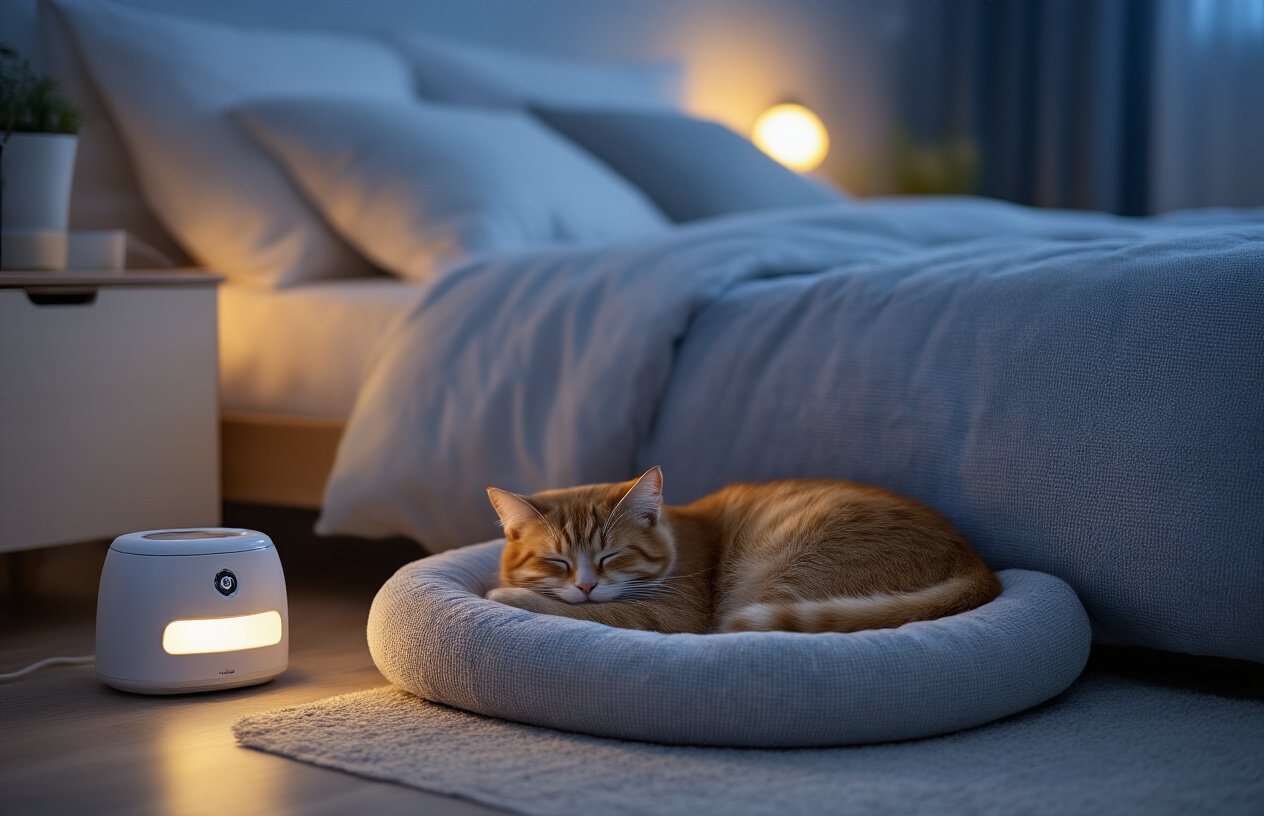
Use Automatic Feeders to Address Hunger Without Your Involvement
Automatic feeders can be a great option for pet parents, as they can help take that burden off cat parents as the sole provider of food. By scheduling multiple small meals throughout the night, you can address your cat’s hunger-driven wake-ups without reinforcing attention-seeking behavior. Look for feeders that allow you to schedule up to 10 meals per day with small portions, ensuring your cat receives consistent nutrition without your direct involvement during sleeping hours.
Confine Your Cat to One Room Overnight
Physical confinement can effectively break the cycle of nighttime disruption when other methods aren’t sufficient. Set up a comfortable space with food, water, litter box, and cozy bedding in a room away from your bedroom. This prevents your cat from accessing you during their active nighttime hours while ensuring they have everything they need. Choose a room that won’t amplify vocalizations that might still wake you, and ensure the space is safe and comfortable for extended periods.
Special Considerations for Senior Cats with Cognitive Issues
Senior cats experiencing cognitive decline may require different management approaches than younger cats. Their nighttime activity might stem from confusion or disorientation rather than typical nocturnal behavior. For these cats, maintaining familiar surroundings and consistent routines becomes even more critical, as changes can increase anxiety and nighttime restlessness.
5 Irresistible Homemade Pet Food Recipes for Cats : Unlock the Secret to a Healthier Cat
When Behavioral Methods Aren’t Enough
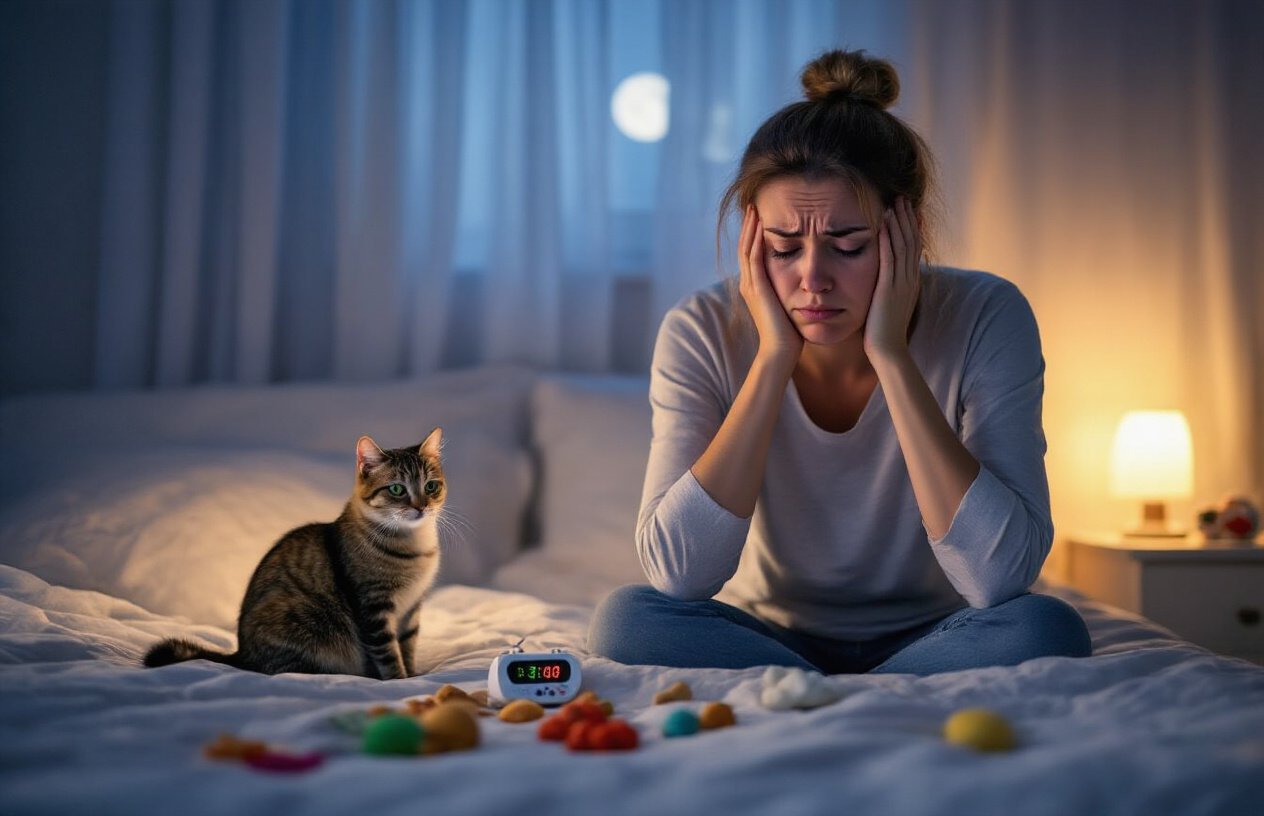
Consult Your Veterinarian About Sleep Medications
When previous behavioral methods haven’t resolved your cat’s nighttime disruptions, it’s time to discuss pharmaceutical options with your veterinarian. Gabapentin, an anti-seizure and pain medication with sedative properties, is commonly prescribed to help reduce anxiety in cats and can effectively address sleep-related behavioral issues.
Consider Gabapentin for Senior Cats
Your vet may recommend gabapentin specifically for older cats experiencing nighttime restlessness. This medication typically takes effect within 1-2 hours and provides sedation lasting 6-12 hours, though effects may last longer in senior cats with reduced kidney function. The medication can be administered as crushed tablets mixed with food or in liquid form for easier dosing. (Please do not use without consulting your veterinarian first.)
Managing Expectations with Kittens
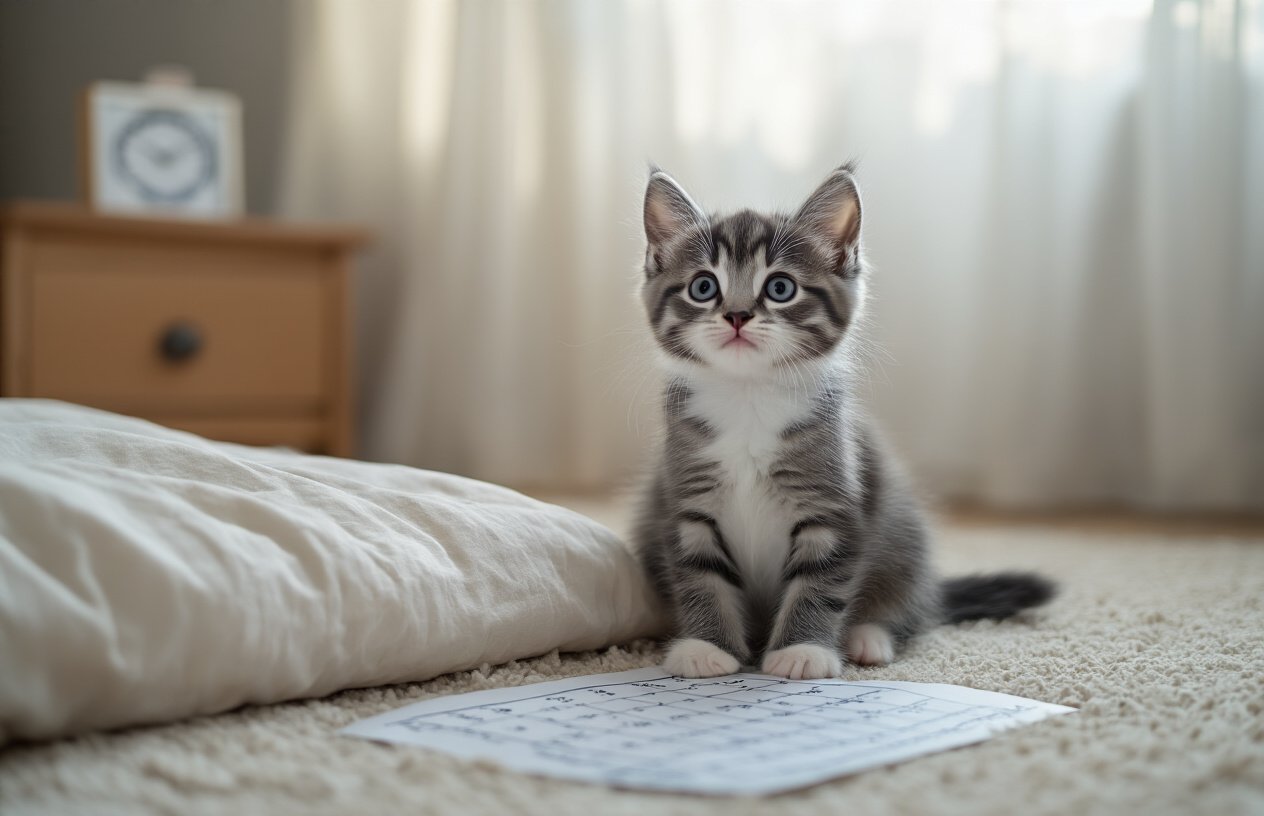
Accept That Nighttime Activity Is Normal for Kittens
Young cats are naturally crepuscular, meaning they’re most active at dawn and dusk when their hunting instincts are strongest. This nocturnal cat behavior is completely normal, even though you might consider it problematic. Your kitten’s nighttime energy bursts, including wild play sessions and attention-seeking behaviors, are ingrained natural behaviors rather than “bad habits.”
Apply Training Methods While Waiting for Maturity
While your kitten develops, establish consistent routines that match your sleep schedule. Provide daily interactive play sessions lasting 20-30 minutes to tire them out before bedtime, and avoid rewarding nighttime attention-seeking behavior. Keep your kitten mentally stimulated during the day with feeding toys and environmental enrichment to prevent excessive daytime sleeping that leads to nighttime activity.
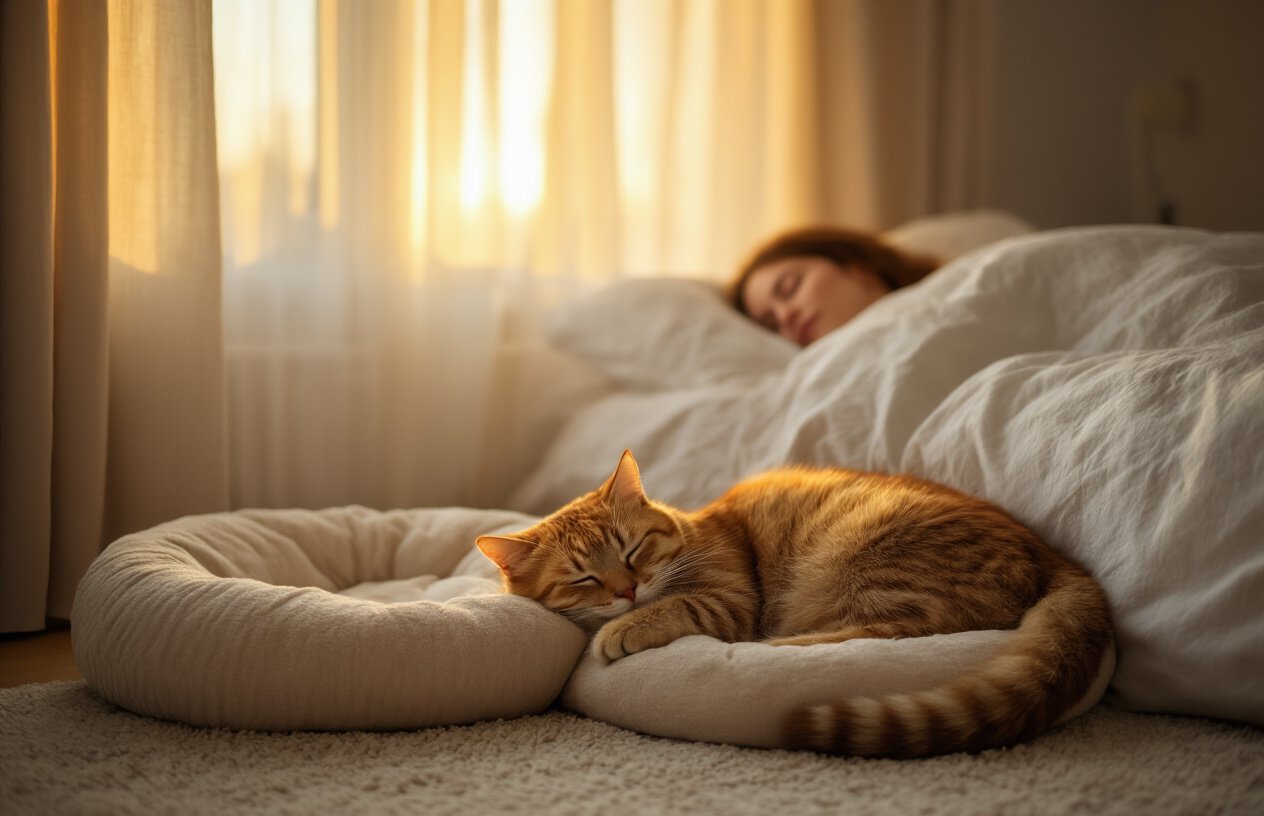
Getting a full night’s sleep with a cat doesn’t have to be an impossible dream. By understanding your cat’s natural crepuscular behavior and implementing the right combination of pre-bedtime play, feeding strategies, and consistent behavioral training, you can successfully break the 3 AM wake-up cycle. Remember that the most crucial element is staying consistent—never reward attention-seeking behavior by getting up, even when faced with an extinction burst where the behavior temporarily increases.
Keep your expectations realistic, especially if you have a kitten whose nighttime energy is completely normal and temporary. For older cats or those with special needs, don’t hesitate to explore physical management solutions like automatic feeders or keeping your cat in a designated room overnight. If behavioral methods alone aren’t working after consistent effort, consulting with your veterinarian about medication options can provide the relief both you and your cat need for better sleep.

